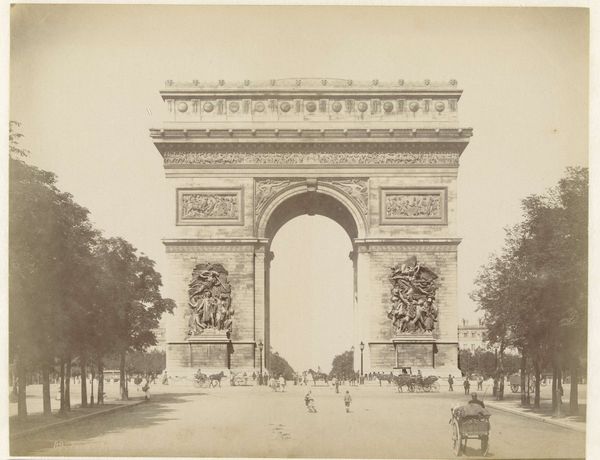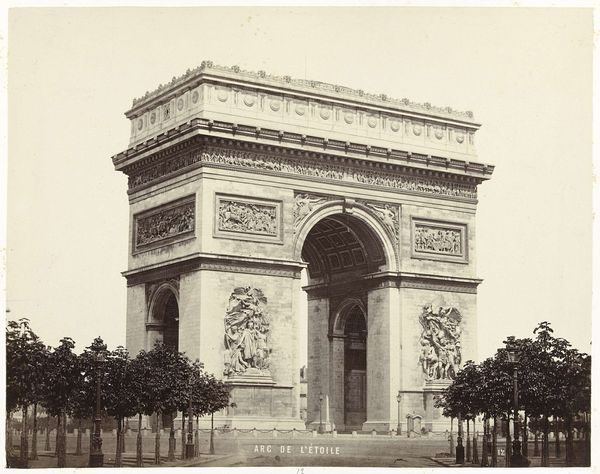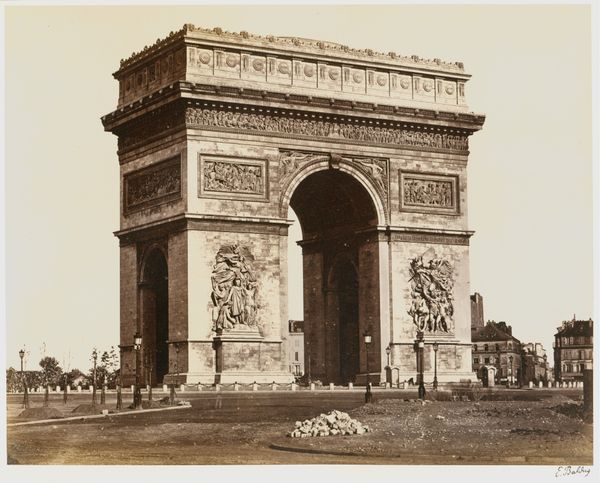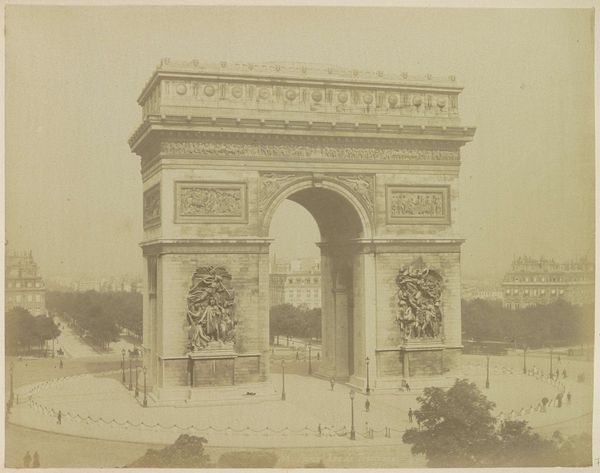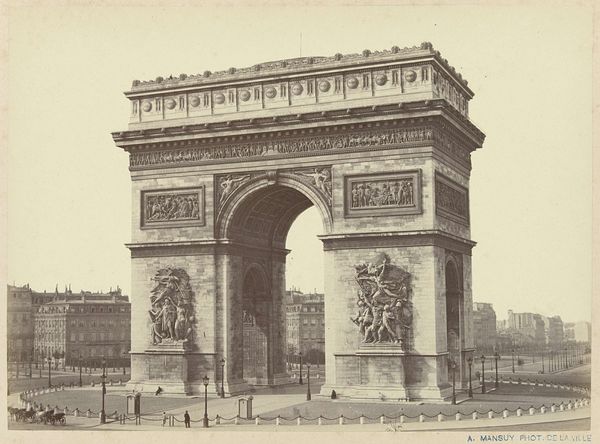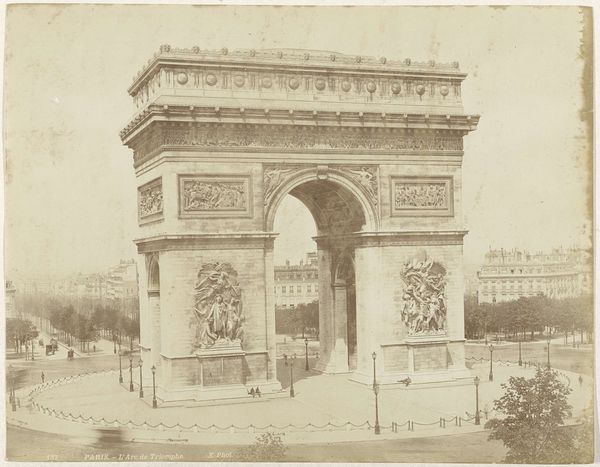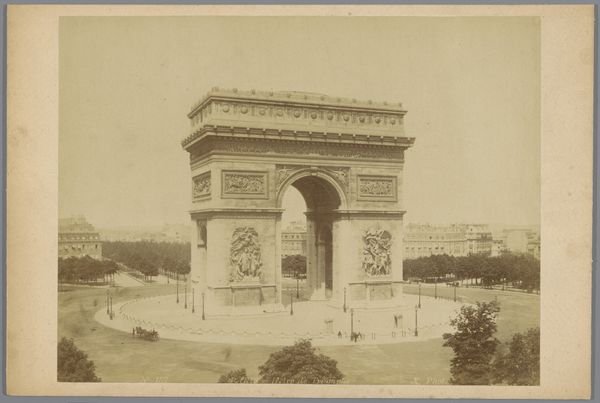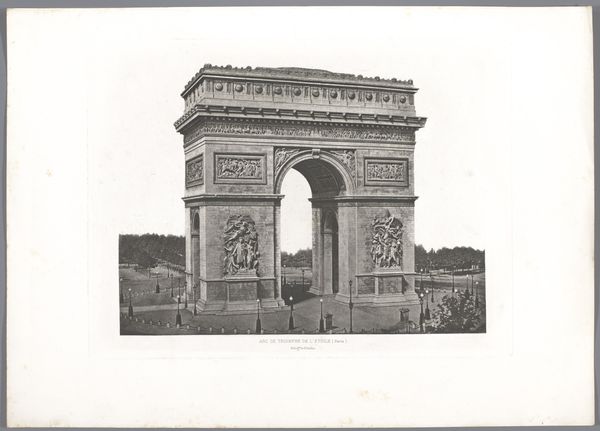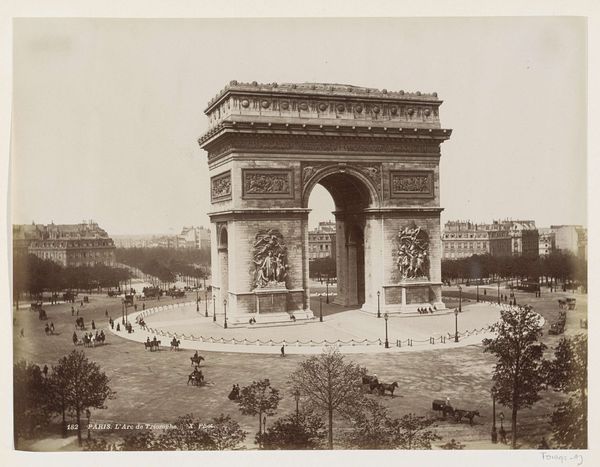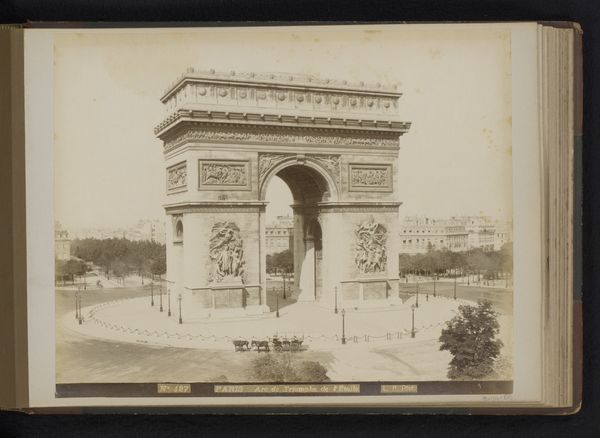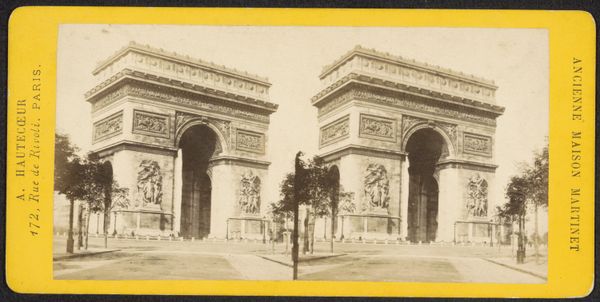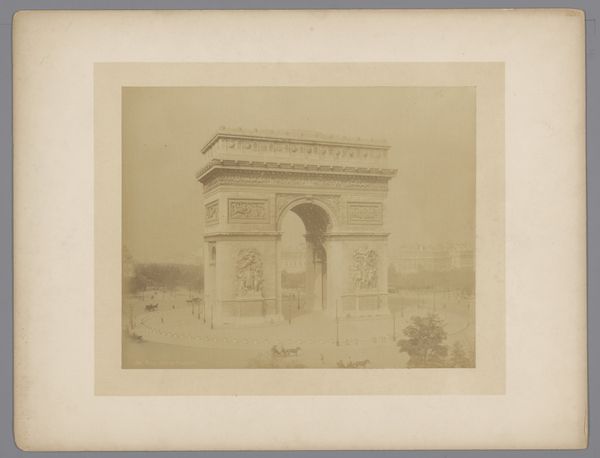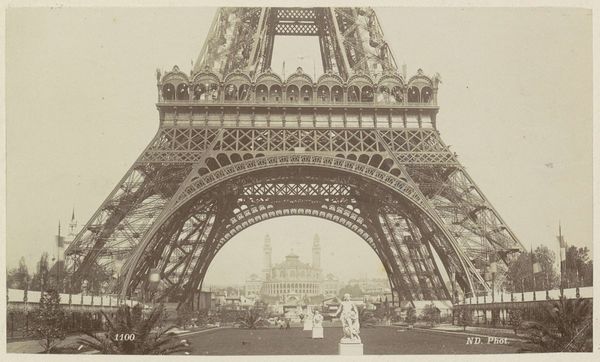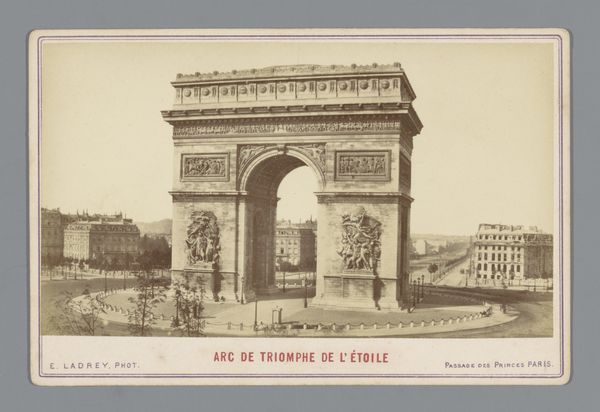
print, daguerreotype, photography, architecture
#
neoclacissism
#
16_19th-century
# print
#
landscape
#
daguerreotype
#
photography
#
cityscape
#
history-painting
#
architecture
#
realism
Dimensions: height 322 mm, width 436 mm
Copyright: Rijks Museum: Open Domain
Edouard Baldus made this photograph of the Arc de Triomphe in Paris using a waxed paper negative, a relatively new technology at the time. This image presents us with an imposing monument, but it also offers insights into the social and political climate of mid-19th century France. The Arc de Triomphe, conceived by Napoleon to celebrate military victories, carries a heavy weight of national identity and imperial ambition. Baldus, as a photographer commissioned by the French government, played a key role in shaping the visual representation of France’s power. His photographs of architectural landmarks presented an idealised vision of French urban spaces. Note how Baldus uses light and shadow to emphasise the Arc’s grandeur. Consider how this photograph might have been used to bolster national pride. Was it aimed at a domestic audience or part of a project of shaping France’s international image? By examining photographs like this alongside other historical documents, we can gain a deeper understanding of the complex relationship between art, power, and national identity.
Comments
No comments
Be the first to comment and join the conversation on the ultimate creative platform.
